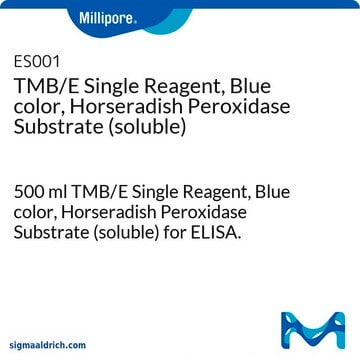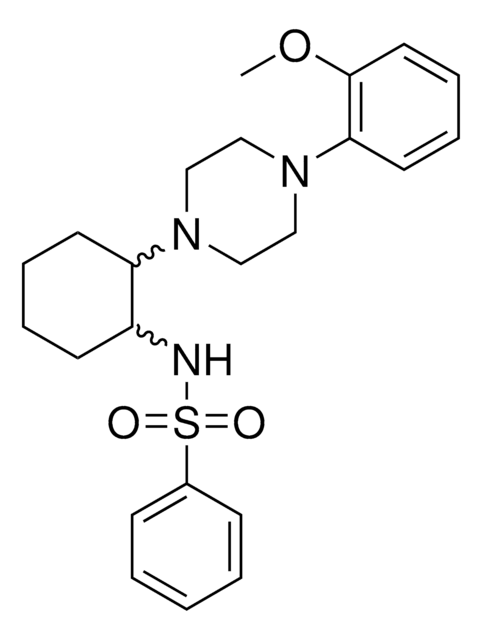G1421
GW405833 hydrochloride
≥98% (HPLC), solid
Sinónimos:
1-(2,3-Dichlorobenzoyl)-5-methoxy-2-methyl-(3-(morpholin-4-yl)ethyl)-1H-indole hydrochloride
About This Item
Productos recomendados
Análisis
≥98% (HPLC)
formulario
solid
control farmacológico
regulated under CDSA - not available from Sigma-Aldrich Canada
condiciones de almacenamiento
desiccated
color
white to pink
solubilidad
DMSO: soluble >10 mg/mL
H2O: insoluble <2 mg/mL
temp. de almacenamiento
2-8°C
cadena SMILES
Cl.COc1ccc2n(c(C)c(CCN3CCOCC3)c2c1)C(=O)c4cccc(Cl)c4Cl
InChI
1S/C23H24Cl2N2O3.ClH/c1-15-17(8-9-26-10-12-30-13-11-26)19-14-16(29-2)6-7-21(19)27(15)23(28)18-4-3-5-20(24)22(18)25;/h3-7,14H,8-13H2,1-2H3;1H
Clave InChI
JIQYDHDVNNFPMU-UHFFFAOYSA-N
Aplicación
Acciones bioquímicas o fisiológicas
Características y beneficios
Palabra de señalización
Danger
Frases de peligro
Consejos de prudencia
Clasificaciones de peligro
Acute Tox. 3 Oral - Aquatic Chronic 4
Código de clase de almacenamiento
6.1C - Combustible acute toxic Cat.3 / toxic compounds or compounds which causing chronic effects
Clase de riesgo para el agua (WGK)
WGK 3
Punto de inflamabilidad (°F)
Not applicable
Punto de inflamabilidad (°C)
Not applicable
Equipo de protección personal
Eyeshields, Faceshields, Gloves, type P2 (EN 143) respirator cartridges
Certificados de análisis (COA)
Busque Certificados de análisis (COA) introduciendo el número de lote del producto. Los números de lote se encuentran en la etiqueta del producto después de las palabras «Lot» o «Batch»
¿Ya tiene este producto?
Encuentre la documentación para los productos que ha comprado recientemente en la Biblioteca de documentos.
Los clientes también vieron
Artículos
We offer many products related to cannabinoid receptors for your research needs.
Nuestro equipo de científicos tiene experiencia en todas las áreas de investigación: Ciencias de la vida, Ciencia de los materiales, Síntesis química, Cromatografía, Analítica y muchas otras.
Póngase en contacto con el Servicio técnico















